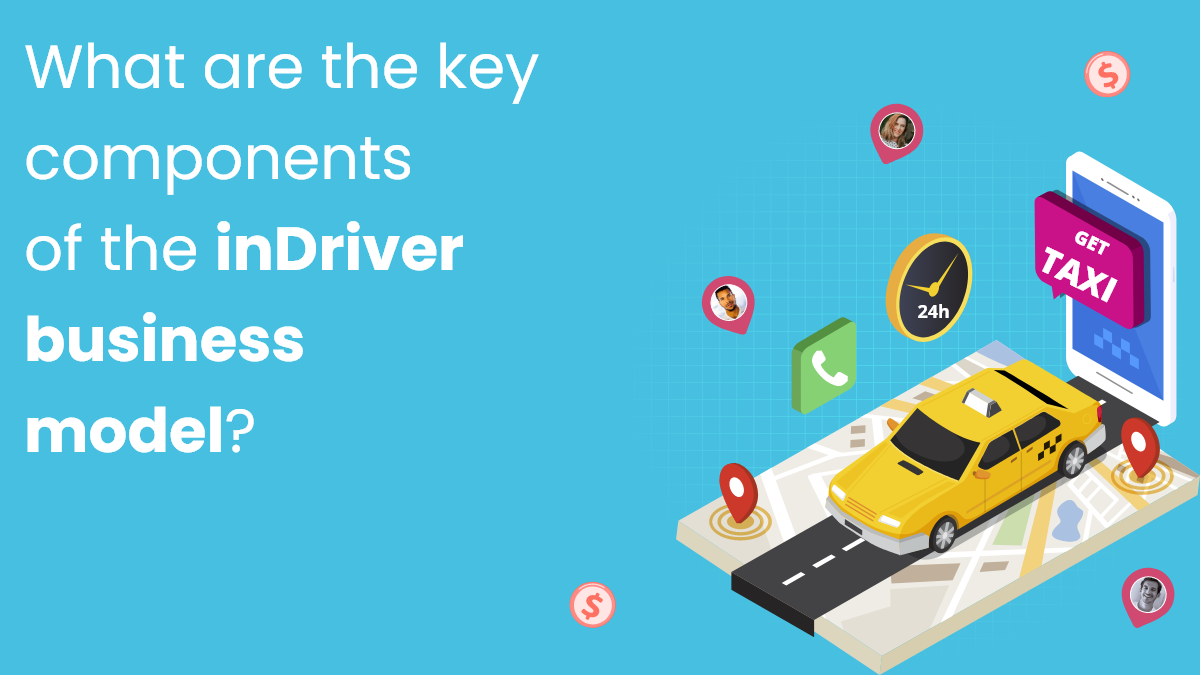Understanding the key components of the inDriver business model is essential to grasp how this innovative ride-hailing platform operates and differentiates itself in the competitive market. Originating in Russia and expanding globally, inDriver has garnered attention for its unique approach to pricing, commission structure, and market strategy. This article explores the fundamental elements that define the inDriver business model.
Dynamic Fare Negotiation System
Central to the inDriver business model is its dynamic fare negotiation system. Unlike traditional ride-hailing services where fares are set by algorithms based on factors like distance, time, and demand, inDriver allows passengers to propose their desired fare when requesting a ride. Nearby drivers then have the option to accept the proposed fare, negotiate for a higher amount, or decline the offer altogether. This approach empowers passengers to set a price they are willing to pay, fostering a competitive pricing environment that benefits both passengers and drivers. The flexibility of fare negotiation not only enhances user satisfaction but also allows drivers to maximize their earnings by choosing the most profitable rides.
Low Commission Structure
inDriver operates with a significantly lower commission structure compared to its competitors. While traditional ride-hailing platforms often charge commissions ranging from 20% to 30% of the fare, inDriver imposes a nominal commission fee, typically around 5% to 10%. This lower commission rate is attractive to drivers as it allows them to retain a larger percentage of their earnings. By offering competitive commission rates, inDriver enhances driver satisfaction, promotes driver retention, and attracts a larger pool of drivers seeking to optimize their profitability on the platform.
Strategic Market Targeting
inDriver strategically targets markets that may be underserved by traditional taxi services or existing ride-hailing platforms. This includes cities with emerging economies and regions where transportation costs are prohibitively high. By identifying these opportunities and adapting its services to meet local needs and preferences, inDriver establishes a strong foothold and captures market share rapidly. The company's localized approach, coupled with culturally sensitive operations and strategic partnerships, enables inDriver to effectively penetrate diverse markets and cater to the unique transportation needs of each region.
Technology-Driven User Experience
The inDriver app is designed to provide a seamless and intuitive user experience for both passengers and drivers. Advanced algorithms facilitate quick and efficient matching of ride requests, while real-time updates keep users informed throughout their journey. The app's user-friendly interface allows passengers to initiate fare negotiations, track their ride in real-time, and provide feedback post-trip, enhancing overall customer satisfaction and retention. By leveraging technology to streamline operations and improve user experience, inDriver sets itself apart as a modern and customer-centric ride-hailing platform.
Community Engagement and Feedback Integration
A crucial aspect of the inDriver business model is its commitment to community engagement and continuous improvement. The company actively solicits feedback from users and integrates suggestions to enhance service quality and operational efficiency continually. By maintaining transparent communication channels and responding promptly to user concerns, inDriver builds trust, fosters loyalty, and strengthens its brand reputation. This customer-centric approach not only drives user retention but also promotes organic growth through positive word-of-mouth and referrals within the community.
Conclusion
In conclusion, the inDriver business model encompasses dynamic fare negotiation, a low commission structure, strategic market targeting, technology-driven user experience, and robust community engagement. These key components collectively define inDriver's approach to redefining the ride-hailing experience and setting itself apart in a competitive industry. By prioritizing flexibility, affordability, and user empowerment, inDriver continues to innovate and expand its global footprint while delivering value to passengers and drivers alike. As the ride-hailing landscape evolves, inDriver remains at the forefront, leveraging its unique business model to meet the evolving needs of modern transportation consumers.

